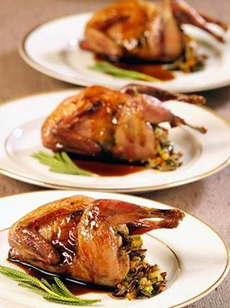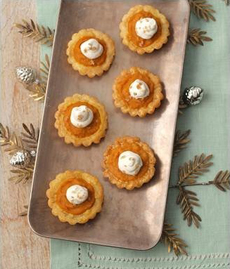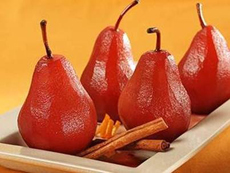
Game hens as attractive as a chorus line. All photography © Lou Manna.
December 2010
|
 |
Food Photography Tips
Tips Food Photography That Make Everything More Luscious
Prominent food photographer Lou Manna, recognized by the elite Olympus Visionary Program, offers these tips for better food photography.
1. Keep Your Composure
Think of a table centerpiece. It’s there as a main point of interest at the table. The same is true for food photography. Find a main point of interest—your photo’s centerpiece—and compose your photograph to draw the viewer’s eye to it. You can do this by sticking to the “Rule of Thirds”: Divide the photograph’s frame into a Tic-Tac-Toe design and place your subject at one of the intersecting points.
2. A Fork’s-Eye View
Lower and raise the camera to obtain unique perspectives. Place your camera on the table and photograph your plate from the point of view of your utensils. Photographing your meal from a low angle can bring volume and scale to your food, while allowing you access to a picture you would not be able to capture with your own eyes—unless you really crouched and strained at the table!
3. Limit Your IngredientsThis sounds like a no-brainer, but often food photographs look cluttered and jumbled. Don’t try to shove your entire table into a picture. Rather than one picture trying to capture everything at once, take ten pictures of your holiday table and scene. Snap close-ups of the plates, decorations and main dishes and then create a storyboard or holiday photo gallery. Taking pictures at different times during the meal will showcase half-eaten meals and half-full serving dishes, incorporating a sense of timeline and narrative into your holiday celebration. |
|

Shooting one item at a time often produces the best results. |
4. Give Your Food A Sense Of Style
Food that’s fresh tastes best—and photographs best. Be prepared to shoot your food right out of the oven or off the stove so it looks organically, effortlessly fresh and moist. Lightly brush the food with vegetable oil to add shine and highlights. A little oil never hurt the taste of a dish, either!
5. Clean Your Plate
Manipulate food with tweezers, if you’re looking to artfully position and style a dish before you photograph it. Clean up crumbs and food particles on plates with Q-tips and paper towels.
|
|

Cinnamon sticks and orange peel, artfully placed. |
6. Crack The ISO Code
ISO denotes how sensitive your camera’s image sensor is to the amount of light available for the picture. The higher the ISO, the more sensitive the image sensor and better equipped your camera is to take pictures in low-light situations (think: romantic dinners!). Even if the lights aren’t dimmed, shooting indoors without a flash is still darker than you may realize. When shooting cookie trays, pumpkin pies and table settings indoors without a flash, the ISO setting should be set to 800 or 1600 so that the camera sensor is more sensitive to the ambient, inside light and captures details, texture and shine.
Continued On Next Page
Tips and photography © Copyright Lou Manna. Other material

|




